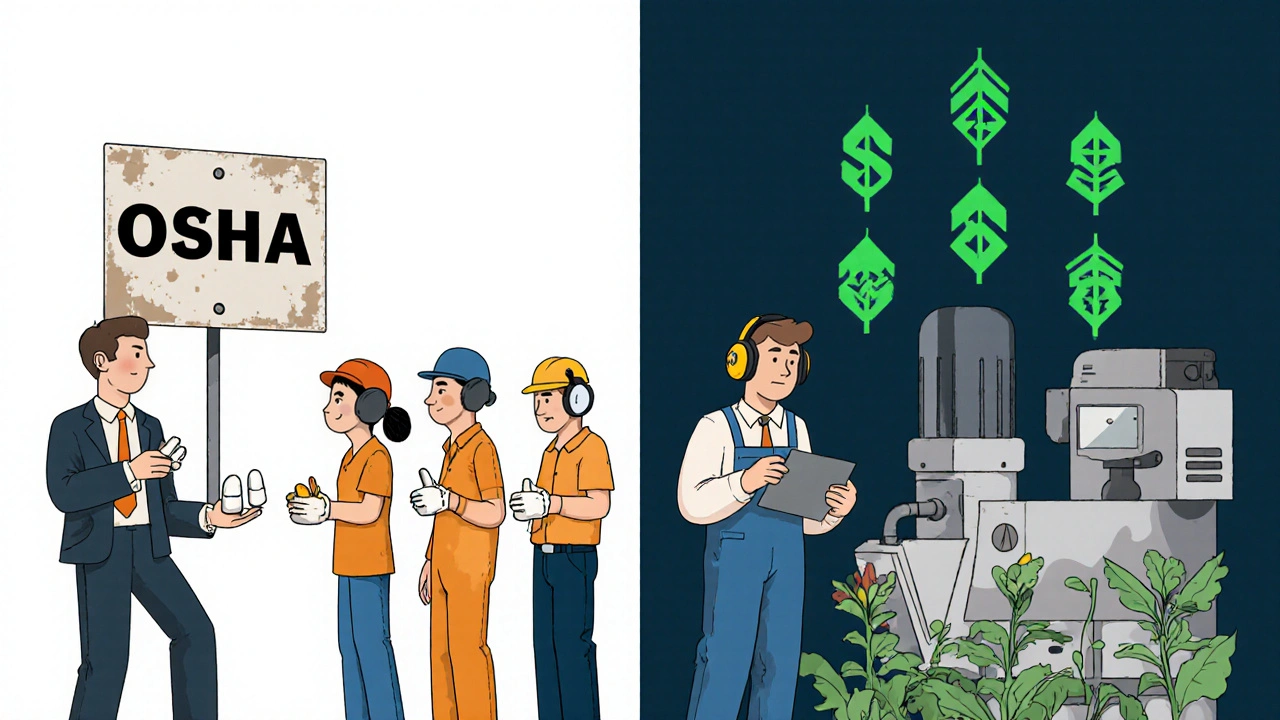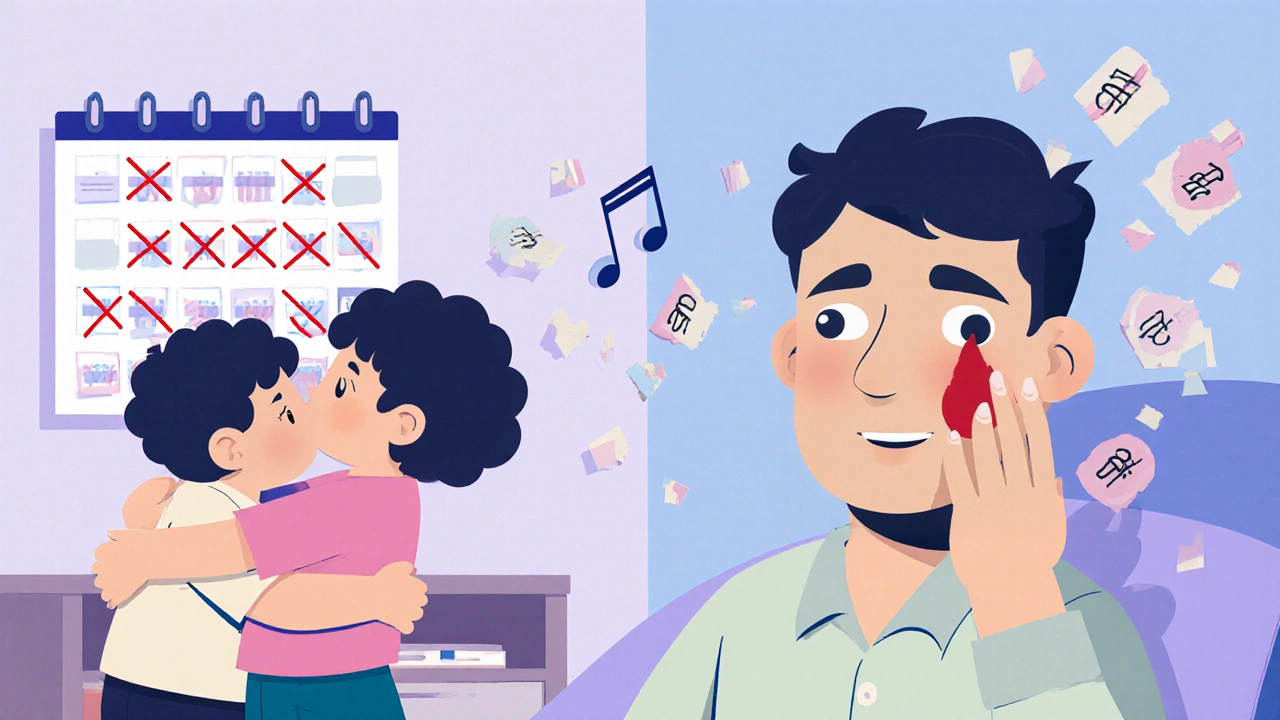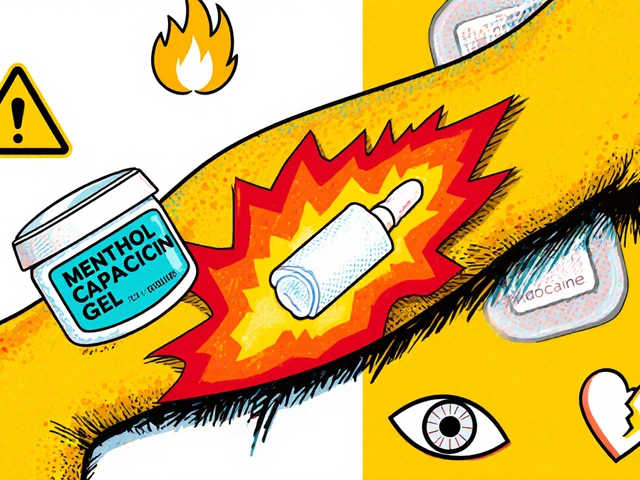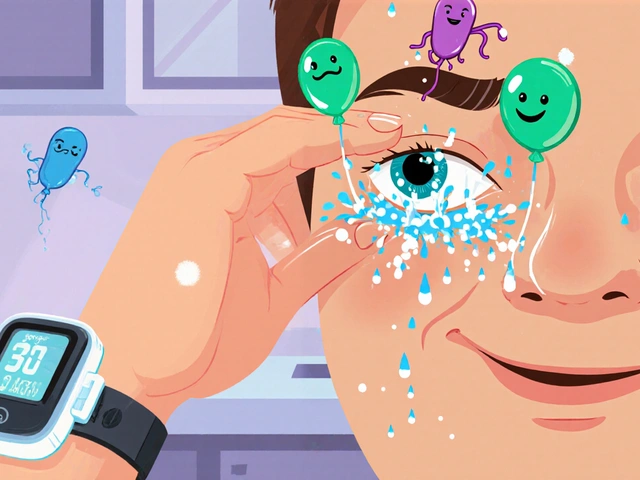Every day, millions of workers are exposed to noise levels that silently destroy their hearing - and most don’t even notice until it’s too late. Unlike a broken bone or a cut, noise-induced hearing loss doesn’t hurt. It doesn’t show up on an X-ray. It creeps in slowly, over years, until one day you realize you’re asking people to repeat themselves, turning up the TV too loud, or missing the sound of your own child’s laugh. This isn’t aging. This is noise-induced hearing loss, and it’s happening right now in factories, construction sites, mines, and farms across the country.
What Exactly Is Noise-Induced Hearing Loss?
Noise-induced hearing loss (NIHL) happens when loud sounds damage the tiny hair cells in your inner ear. These cells turn sound waves into signals your brain understands. Once they’re destroyed, they don’t grow back. That’s why NIHL is permanent. It doesn’t matter if you’re 25 or 55 - if you’re exposed to loud noise over time, your hearing will go. And it’s not just from one explosion or concert. Most cases come from daily exposure to sounds above 85 decibels (dBA) - the level of a busy city street, a lawnmower, or a power saw.
Unlike other injuries, you can’t feel this damage happening. You won’t wake up with ringing ears after a shift. It builds up quietly. By the time you notice, you’ve already lost 20, 30, or even 50% of your hearing in the high frequencies - the range where speech clarity lives. That’s why so many workers think they’re fine until they’re diagnosed during a routine hearing test.
Where Is the Noise Coming From?
Some jobs are louder than others. According to CDC data, construction workers face the highest risk - 22% are exposed to noise above 85 dBA. Manufacturing isn’t far behind at 19%, followed by mining (17%) and agriculture (15%). In these industries, you’ll find:
- Jackhammers and demolition tools (110-130 dBA)
- Grinders and saws (95-110 dBA)
- Trucks and heavy machinery (90-100 dBA)
- Assembly line equipment (85-95 dBA)
Even office workers aren’t completely safe. Call centers with constant background noise, warehouse workers near forklifts, and airport ground crews all face risky exposure. The problem isn’t just the machines - it’s how long you’re near them. A 90 dBA sound is safe for 2 hours. At 95 dBA? Only 1 hour. At 100 dBA? Just 15 minutes.
Why Are Current Safety Rules Not Enough?
Most workplaces follow OSHA rules: 90 dBA for 8 hours is the legal limit. But here’s the truth - that limit was set in 1983 and hasn’t kept up with science. NIOSH, the federal agency that actually studies this stuff, says 85 dBA is the real threshold where damage begins. And they’re not alone. The European Union already uses 80 dBA as the action level. That’s a huge difference.
Think of it this way: if you’re exposed to 90 dBA for 8 hours under OSHA rules, you’re getting 16 times more noise energy than if you were exposed to 85 dBA under NIOSH’s safer limit. That’s not a small gap - it’s the difference between losing a little hearing and losing most of it by age 40.
And here’s the kicker: even if you’re under the legal limit, you’re still at risk. Dr. Thais Morata, a leading audiologist at NIOSH, says bluntly: “Occupational noise exposure limits do not prevent NIHL.” That’s because 85 dBA isn’t a safe level - it’s the level where hearing loss starts.

What Actually Works to Prevent It?
There’s a proven way to stop NIHL - and it’s not just handing out earplugs. The best approach follows the hierarchy of controls, a safety model that ranks solutions from most effective to least:
- Elimination - Remove the noise source. Not always possible, but when it is, it’s perfect.
- Substitution - Replace loud machines with quieter ones. NIOSH’s “Buy-Quiet” program now lists over 1,200 low-noise tools and machines, some 3-15 dBA quieter than standard models.
- Engineering Controls - Build barriers, enclose machines, install mufflers. In mining, noise dropped from 98 dBA to 82 dBA after installing acoustic shields - workers reported less fatigue and better focus.
- Administrative Controls - Rotate workers, limit shift time in noisy areas. But this only works if done right. Studies show effectiveness varies by 25-75% depending on how well it’s managed.
- Hearing Protection - Earplugs and earmuffs. This is the last line of defense - and the most unreliable.
Too many companies stop at step five. They hand out foam earplugs and call it a day. But real-world use? Only 15-20 dB of protection - far less than the 30+ dB listed on the box. Why? Because most people don’t insert them correctly. A 2017 Cochrane review found 75% of workers insert foam earplugs wrong. They roll them too small, don’t wait for them to expand, or pull them out too soon.
What Kind of Hearing Protection Actually Works?
Not all earplugs are created equal. Here’s what works best:
- Custom-molded earplugs - Made for your ear canal, these give consistent 25-30 dB protection. They’re pricier ($100-$200), but last years and fit perfectly. Used widely in music and aviation.
- Electronic earmuffs - These block loud noise but let through speech and alarms. Great for jobs where communication matters. The 3M PELTOR TS3+, released in 2023, even records your daily noise exposure for compliance.
- High-fidelity earplugs - These reduce volume evenly across frequencies so you still hear speech clearly. Popular in construction and manufacturing.
- Standard foam earplugs - Cheap, easy to find, but only if used right. Training matters. A 10-15 minute one-on-one demo can double their effectiveness.
And don’t forget: if you’re wearing earplugs but still can’t hear your coworker yelling a warning, you’re not protected - you’re in danger.
Why Don’t Workers Use Protection?
It’s not that people are careless. It’s that most programs are designed without them in mind. Workers on Reddit’s r/occupationalhealth say things like:
- “I take my earplugs out because I can’t hear the forklift coming.”
- “These foam plugs hurt after two hours.”
- “Management gives us the cheapest ones. They don’t care.”
NIOSH data confirms it: only 38% of workers in high-noise jobs wear protection all shift. The top reasons? Discomfort (67%), communication problems (58%), and thinking it’s not necessary (42%).
Here’s what changes that: when workers help pick the protection, compliance jumps to 87%. When managers actually listen, train, and follow up, people wear them. It’s not about rules - it’s about respect.

What Should a Real Hearing Conservation Program Include?
A good program isn’t a checklist. It’s a system. NIOSH’s 5-step model works:
- Measure noise - Use a calibrated sound level meter (Type 2 or better). Don’t guess. Don’t rely on old data.
- Reduce noise at the source - Fix, replace, or enclose loud equipment. This is the only way to truly protect everyone.
- Fit-test hearing protection - Use Real Ear Attenuation at Threshold (REAT) testing. This measures how much protection each worker actually gets - not what the box says.
- Test hearing annually - Baseline within 6 months of hire. Follow-up tests at 500, 1000, 2000, 3000, 4000, and 6000 Hz. A “standard threshold shift” - a 10 dB drop at 2000-4000 Hz - means damage is happening.
- Train properly - One 15-minute demo per worker, every year. Show them how to insert earplugs. Let them practice. Test them.
Companies that do this spend $150-$300 per employee per year. But they save $5.50 for every $1 spent - through fewer workers’ comp claims, less absenteeism, and fewer accidents caused by missed warnings.
The Bigger Picture: Why This Matters Beyond the Workplace
Noise-induced hearing loss isn’t just a workplace issue. It’s a public health crisis. In 2022, 19,300 workers missed work due to hearing loss. Each claim cost an average of $14,700. The global hearing protection market is worth $1.27 billion - and growing. But money isn’t the real cost.
People with untreated hearing loss are more likely to develop depression, anxiety, and dementia. They withdraw from family, avoid social events, and lose confidence. That’s the hidden toll.
And it’s getting worse. California just passed new rules requiring employers to use engineering controls before relying on earplugs. The EU is lowering its exposure limit to 80 dBA. NIOSH is drafting new guidelines targeting 80 dBA by 2025. The science is clear. The tools exist. The question is: who will act before it’s too late?
What You Can Do - Whether You’re a Worker or a Boss
If you’re exposed to loud noise at work:
- Ask for a noise assessment. If they say “we’ve always done it this way,” push back.
- Try different earplugs. If they hurt or fall out, ask for alternatives.
- Get your hearing tested every year - even if you think you’re fine.
- Report problems. If you can’t hear your supervisor or alarms, say something.
If you manage a team:
- Don’t just hand out earplugs. Find out what’s loud and fix it.
- Let workers help choose hearing protection. Let them test it.
- Train them. Don’t just hand out a pamphlet. Show them how to use it.
- Track your results. Are hearing losses going down? Are complaints decreasing?
NIHL is one of the few occupational diseases that’s 100% preventable. But prevention only works if you treat it like a priority - not an afterthought. Your hearing won’t come back. But if you act now, you can keep it.
Can noise-induced hearing loss be reversed?
No. Once the hair cells in your inner ear are damaged by loud noise, they don’t regenerate. That’s why NIHL is permanent. You can’t cure it with medicine, surgery, or supplements. The only effective treatment is prevention - stopping the damage before it starts.
Is 85 dBA really dangerous?
Yes. While OSHA allows up to 90 dBA, NIOSH and the CDC say 85 dBA is the level where hearing damage begins. At 85 dBA, you can be exposed for 8 hours. At 88 dBA, only 4 hours. At 91 dBA, just 2 hours. The higher the noise, the faster the damage. There’s no safe threshold - only less dangerous ones.
Do earplugs really work?
Only if used correctly. Foam earplugs are rated for 30+ dB in labs, but in real use, most people get only 15-20 dB because they’re inserted wrong. Custom-molded or electronic earplugs provide more consistent protection. The key isn’t the product - it’s training. Workers who get hands-on instruction are 75% more likely to use them properly.
Why don’t more companies fix noise at the source?
It’s cheaper to buy earplugs than to replace machines or install sound barriers. But that’s a false economy. Engineering controls reduce exposure for everyone, not just those wearing protection. They also improve focus, reduce fatigue, and lower accident rates. Companies that invest in quieter equipment report better productivity and lower turnover.
What’s the best way to test hearing at work?
Annual audiometric testing using ISO 8253-1:2010 compliant equipment is the standard. A baseline test should be done within 6 months of starting a noisy job. Follow-up tests check for a “standard threshold shift” - a 10 dB drop at 2000, 3000, and 4000 Hz. This is the earliest warning sign of NIHL. If it happens, the employer must take action - not just give more earplugs.
Are there new technologies helping prevent hearing loss?
Yes. Smart hearing protection like the 3M PELTOR TS3+ records daily noise exposure and alerts workers when limits are exceeded. The NIOSH Sound Level Meter App lets supervisors screen noise levels on smartphones with ±2 dB accuracy. Researchers are also exploring biomarkers in blood or saliva that could detect early cell damage before hearing tests show changes - potentially catching NIHL before it’s permanent.






jobin joshua
23 November, 2025 . 12:24 PM
Man, I work in a warehouse and we’ve got forklifts buzzing all day-90+ dBA easy. I used to think earplugs were for nerds until my hearing test showed a 15dB drop at 4kHz. Now I wear custom m olds. Worth every penny. No more asking people to repeat themselves at family dinners.
Diana Askew
24 November, 2025 . 12:05 PM
This is all a scam. The government and big biz want you to buy expensive earmuffs so they can charge you more. Real solution? Just quit your job and work from home. They don’t want you to hear the truth because then you’d realize how much they’re lying about ‘safety standards.’ ;)
King Property
26 November, 2025 . 00:20 AM
Stop wasting time with earplugs. If your workplace is hitting 85 dBA and you’re not pushing for engineering controls, you’re complicit in your own hearing loss. I’ve seen guys in manufacturing with 70% hearing loss by 40 because they took the ‘easy’ route. OSHA’s 90 dBA limit is a joke-it’s 1983 tech thinking. NIOSH’s 85 is the bare minimum. And if your company doesn’t do REAT testing? Fire them. Seriously.
Yash Hemrajani
27 November, 2025 . 12:58 PM
Oh wow, another article that tells us what we already know. You know what’s worse than loud machines? When HR hands you a pack of foam plugs and says ‘Stay safe!’ like that’s a solution. Bro, I’ve seen guys roll those things like tiny cigars and expect 30dB. That’s not protection-that’s a magic trick. And don’t get me started on ‘training’ that’s just a 5-minute video in a break room. 😒
Pawittar Singh
29 November, 2025 . 00:04 AM
Hey, if you're reading this and you're on a noisy floor-don't wait for your boss to fix it. Ask for a demo of the new electronic muffs. Try the high-fidelity ones. They let you hear speech and alarms. And if they say 'no budget'? Show them the NIOSH ROI: $5.50 saved for every $1 spent. We did this at our plant last year. Fewer accidents, better morale. You're not just protecting your ears-you're protecting your life. 🙌
Pranab Daulagupu
29 November, 2025 . 20:21 PM
NIHL is silent but it’s not invisible. I’m 34 and already need hearing aids for high frequencies. My job was a printing press-100 dBA for 10 hours a day. I thought I was fine because I didn’t feel pain. That’s the trap. Prevention isn’t optional. It’s survival. If you’re reading this and still using cheap foam plugs? Stop. Learn how to insert them. Or get better gear. Your future self will thank you.
Josh Evans
30 November, 2025 . 01:16 AM
My dad’s a retired electrician. He’s got tinnitus and can’t hear birds anymore. He says the worst part isn’t the noise-it’s missing his grandkids’ first words. This isn’t just about work. It’s about connection. If your company doesn’t care, you’ve got to care for them.
Allison Reed
1 December, 2025 . 10:11 AM
Great breakdown. The hierarchy of controls is non-negotiable. Elimination > substitution > engineering > administrative > PPE. Yet 90% of programs stop at PPE. That’s not safety culture-that’s negligence dressed up as compliance. Companies that invest in quieter equipment don’t just reduce risk-they attract better talent. People want to work somewhere that respects their body. Period.
Sachin Agnihotri
3 December, 2025 . 01:12 AM
Just got my annual audiogram. No threshold shift. But I’m switching to custom m olds next month anyway. Why wait for damage? My ears are the only pair I’ve got. And no, I’m not waiting for HR to ‘get around to it.’ I’m doing it myself. 😎